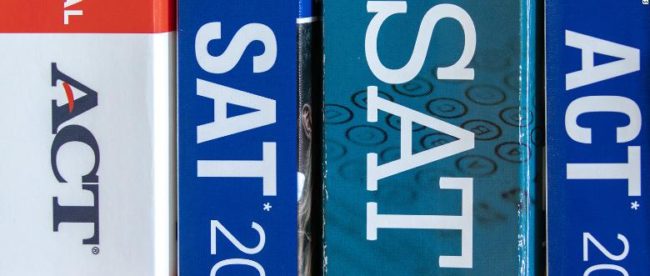The Inequity of Standardized Testing
By Varnika Dhandapani
Standardized testing has always been an unsuitable method of determining academic prowess or predicting a person’s success in college, much less an accurate indicator of intelligence. Tests like the SAT and ACT have been put under greater scrutiny due to the greater lack of access to standardized tests during the COVID-19 pandemic. These tests are inherently flawed. Many poorer students and minorities are at a disadvantage as they lack access to test preparation and resources. College Board data showed that the White and Asian students together had average SAT scores greater than 1100 while every other racial group had an average of less than 1000. Data from 2015 also showed significant differences in scores from people of different income brackets. Poorer districts lack the funding from taxes to properly support public schools and provide students with adequate test preparation in schools. Outside tutoring or test preparation can be an expense many are unable to afford, especially in a time when 6.3% of Americans are unemployed and spending must be triaged. Stereotypes about which racial groups or genders succeed in certain subjects also leave a psychological mark on students that can affect test scores, especially when the test asks that they indicate these prior to the exam. Even parents’ level of education can impact a student’s performance on a standardized test like the SAT or ACT.
The SAT, originally known as the Scholastic Aptitude Test, has been in use for nearly a century as a tool to make college admissions more objective. The test was originally designed by Robert Yerkes in World War I as an IQ test called the Army Alpha to be used for Army recruits. Psychologist Carl Brigham then adapted it for colleges to use to determine admission standards. It was thought to be a measure of intelligence and the College Board maintained the notion that preparation had no effect on scores until the late 1940s when the SAT preparation industry began to rise and this was shown to be otherwise. The test was first used in 1926 for educational purposes, and in 1933, the president of Harvard University, James Conant, chose the SAT as the means to ascertain which students would be admitted by a certain scholarship. In 1938, Henry Chauncey, the assistant dean at Harvard that recommended the use of the SAT to Conant, convinced the College Board to use the SAT as a standardized test for all scholarship applicants. The SAT was supposed to be an objective alternative to a written test to prevent any bias, and yet many institutions used SAT scores to perpetuate the racial biases that many minority groups were less intelligent. SAT scores became a tool to justify denying minorities acceptance and access to higher education.
The ACT, developed as an alternative to the SAT and first administered in 1959, was designed to test for practical knowledge rather than the ability to reason. Both tests morphed through revisions spurred by competition. As a result, both became more accessible and of higher quality. Today, both the SAT and ACT are in use and accepted by most colleges. The need for standardized testing has created a test preparation industry that only people in wealthier income brackets can access. Test scores are determined by factors like class and socioeconomic standing, preventing many minorities pursuing higher education. Steps like affirmative action have been taken in an attempt to combat the biases posed by these tests, but even these steps have been deemed controversial and have failed to propel large-scale reform.
Unlike in 2020 when standardized testing was deemed optional, the Department of Education under the Biden Administration has set forward to continue standardized testing with exams designed to be more accommodating under the circumstances of online learning in a pandemic. The tests may be modified to be shorter or delayed, but the show must go on. Meanwhile, certain colleges or universities, including the University of California system, have removed the requirement for SAT or ACT scores for the coming years. The College Board has also eliminated the SAT subject tests in favor of more accessible AP tests, and the SAT no longer has a writing section. In conditions like these, the number of students submitting SAT or ACT test scores has decreased dramatically: 44% of high school students applying to college with the Common Application in the 2020-2021 school year submitted SAT or ACT scores as opposed to 77% in the previous school year. This generates skewed data, with only wealthier students submitting scores.
As vaccinations slowly roll out and we eventually move forward from the COVID-19 pandemic, the Department of Education and institutions affiliated with it will need to reform the college admissions process. Many schools are becoming test optional, while others are creating tests that students must take for that specific school. New standardized tests like the Classic Learning Test, which is better for remote learning, have begun to emerge to challenge the ACT and SAT with different formats, scoring, and slightly varied concepts. These tests, however, are not widely accepted and lack the subsidies to be accessible to everyone. Some states have subsidized the ACT and SAT enough to offer them to students for free, although this is not the case in many more states. More funding for public schools will go a long way to even the playing field for students coming from poorer districts, as will access to good test preparation centers. Until changes like these are implemented and outdated and biased evaluations are eliminated, the college admissions process will remain an obstacle standing in the way of an equitable society.
Sources:[otherworlds.org, nea.org, pbs.org, manhattanreview.com, forbes.com]
https://otherwords.org/standardized-tests-are-biased-and-unhelpful
https://www.nea.org/advocating-for-change/new-from-nea/racist-beginnings-standardized-testing
https://www.pbs.org/wgbh/pages/frontline/shows/sats/where/history.html
https://www.manhattanreview.com/sat-history
Sources of Images:
https://cdn.cnn.com/cnnnext/dam/assets/200521214328-02-act-sat-suspended-exlarge-169.jpg
https://specials-images.forbesimg.com/imageserve/5d55764795808800097ce87e/960×0.jpg?fit=scale
https://www.insidehighered.com/sites/default/server_files/media/schaberg%20online_0.jpg

